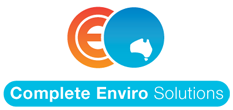Rooftop Solar & Battery Systems
Solar Power Systems
About 15% of Australian homes now use solar energy as a sustainable source of electrical power. And according to predictions from experts, this number will only grow in years to come. This comes as high electricity costs, in addition to climate change, push more entities towards switching to renewable energy. Solar batteries can store solar energy for use when sunlight isn’t present.
The case for installing a solar system for your home or business is now very compelling as the price of solar power has declined dramatically over the past 2 years. This coupled with continual electricity price rises has meant that the business case for solar is now extremely attractive.
Installing a solar array on your home or business is like installing a generator for which you never have to pay for fuel. Because there’s no combustion involved in generating solar energy, its operation produces no pollutants. Solar power systems also have very low maintenance requirements, and typical warranties will cover a system for 25 years and we have an abundance of sunlight.
When purchasing a solar system, you need to consider the following:
- The capital cost of the system (this may be $0 if a leasing option is selected).
- Your current electricity consumption patterns.
- Current and future electricity tariffs.
- The “yield” generated by the system (this comes in the form of reduced electricity consumption).
- Available roof space (including pitch and orientation).
Battery Storage
Many people are keen to incorporate battery storage into their solar system to use any excess power in the evening whilst other households are looking to run their home almost entirely on solar power with backup functionality. While these option has been possible for several years, prices of deep cycle batteries and other components required have been high, the equipment cumbersome and required a degree of knowledge to operate and maintain. This has meant residential energy storage has been largely confined to off-grid applications and storage enthusiasts up until now.
The rapid drop in prices and evolution of lithium-ion batteries and associated technology is changing all that. The new generation of solar energy storage is cheaper to buy, more cost-effective, streamlined, better looking and will become an increasingly common sight in households and smart homes.
What happens in a power failure?
For most grid-connected systems, having a battery doesn’t necessarily protect you in the event of a blackout. You may still lose all power to your home, despite having solar panels producing power and a charged battery ready and waiting. This is because grid-connected systems have what’s known as “anti-islanding protection”. During a blackout, the grid and any technicians working on the lines must be protected from “islands” of electricity generation (such as your solar panels) pumping power unexpectedly into the lines. For most solar PV systems, the simplest way to provide anti-islanding protection is to shut down entirely. So, when it senses a grid blackout, your solar PV system shuts down and you have no household power at all.
More sophisticated inverters can provide anti-islanding protection during a blackout, but keep the solar panels and battery operating so that the house has some power. But expect to pay a fair bit more for such a system, as the hardware is more expensive, and you may need more solar and battery capacity than you think to run the house for a few hours during a blackout. You might choose to allow only critical household circuits to operate in that situation, such as the fridge and lighting. That might require extra wiring work.
Complete Enviro Solutions can offer a range of solar power systems with or without battery storage. All components are German quality or equivalent.
